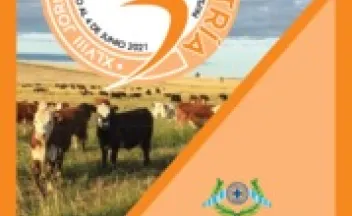Instituto Nacional de Investigación Agropecuaria
LARISSA THANS CARNEIRO
Equine infectious anemia virus worldwide prevalence: A 24-year retrospective review of a global equine health concern with far-reaching implications.

ABSTRACT.- Equine Infectious Anemia Virus (EIAV), the causative agent of Equine Infectious Anemia (EIA), presents a significant threat to equine populations worldwide. While local EIAV prevalence has been estimated in several studies, no global prevalence has been determined. Thus, this study aimed to review the literature on EIAV prevalence in the 21st century.
Modeling forest structural variables of Eucalyptus dunnii Maiden stands under short-rotation management using SAR, multispectral, soil-derived, and field-based data.

ABSTRACT.- The replacement of native grasslands with commercial Eucalyptus plantations has increased in South America. These plantations are typically managed under short rotation regimes for pulp production. Since afforestation can enhance carbon sequestration, the accurate estimation of structural variables at large scales is valuable for sustainable forest management.
Recalibration and validation of VegSyst model for soil-grown greenhouse tomato cultivated in Uruguay. [Conference paper].

ABSTRACT.- The VegSyst simulation model has been developed for use in an on-farm decision support system (DSS) to estimate crop nitrogen (N) and irrigation requirements of different vegetable crops in the Mediterranean Basin. VegSyst simulates dry matter production (DMP), crop N uptake and crop evapotranspiration (ETc). Then it was adapted to simulate also daily uptake of K, P, Ca and Mg. The only inputs are readily available daily climatic data of air temperature, solar radiation and roof transmissivity, plus the dates of the crop.
Abundancia mitocondrial hepática en dos genotipos holstein en pastoreo.

Resumen: El objetivo de este trabajo fue determinar la abundancia mitocondrial hepática en dos genotipos Holstein en un sistema pastoril durante lactancia media-tardía. Para este trabajo se utilizaron vacas del genotipo Holstein neozelandés y del genotipo Holstein norteamericano, las mismas pastorearon una pastura mixta de Medicago sativa y Dactylis glomerata y suplementadas con concentrados y reservas forrajeras. Se tomaron biopsias de hígado y



